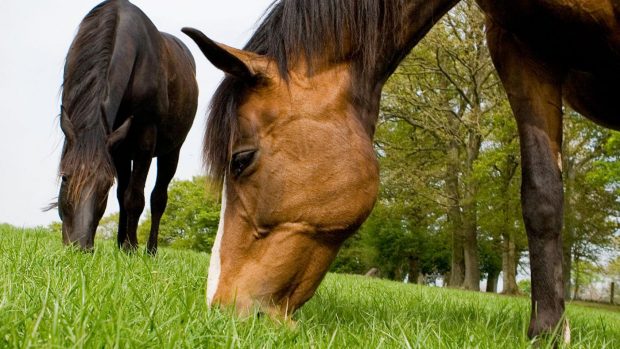Q: My husband is a keen endurance runner and uses carbohydrate loading to increase his performance before a big race. I enjoy endurance riding with my Arab gelding at a novice level. Can carbohydrate loading be used for horses?
Christine Smy replies: Carbohydrate or glycogen loading is a common method for human athletes to increase theirsupply of energy-providing glycogen (the carbohydrate which is stored inside muscle cells).
To achieve this, intake of carbohydrate (often eaten in the form of pasta) is increased several days before a race.
There is some debate as to whether it is safe to carbohydrate load a horse before an event, though many people actually do so without knowing it!
Some nutritionists believe it is possible to increase the cereal or concentrate portion of the ration by between 10 and 15 percent, up to three days before a competition.
Most medium- to high-energy concentrates will contain up to 30 per cent starch (a soluble carbohydrate) and therefore, a diet containing 3kg of concentrates, increased up to 4.5kg a day, will have a higher starch content of 450g.
If you were to do this, I would suggest you add an extra feed a day, rather than increasing the existing feeds. Also, bear in mind that there may well be added instant energy created by the breakdown of starch. If your horse has plenty of natural energy you may well push him over the top.
There are products, mainly from America, consisting of carbohydrate powders that are readily digested in the small intestine, creating a rise and fall of glucose in the body.
The danger would arise if these carbohydrates were taken through to the large intestine in huge amounts and digested with the aid of the beneficial bacteria, which are efficient in the breakdown of fibre.
This could lead to metabolic problems such as tying up, laminitis or colic. If your horse is prone to these types of problems, do not consider increasing his concentrate ration, rather, feed a product low in starch yet containing highly digestible fibre sources – checkthe feed bag for details.
Avoid feeding high levels of sugars such as table sugar before the ride, as the chemical make-up of these sugars consists of short chains which are broken down quickly, resulting in rapid glucose peaks and troughs.
However, many endurance riders allow their horses to drink drained sugar beet pulp water every few hours during a ride.
This contains sugars leeched from the molasses and is a good boost.If you do decide to increase your horse’s carbohydrateintake, give the extra feed within one to two hours following exercise, once he has cooled down, as this will allow optimum uptake by the muscles.
Remember to make any changes slowly and if you are not 100 per cent sure it’s making a difference, revert back to your tried-and-tested feeding regime.
Read more expert advice on feeding competition horses:



